Work through each of the stations below, and answer the questions in the worksheet.
Station 1: England
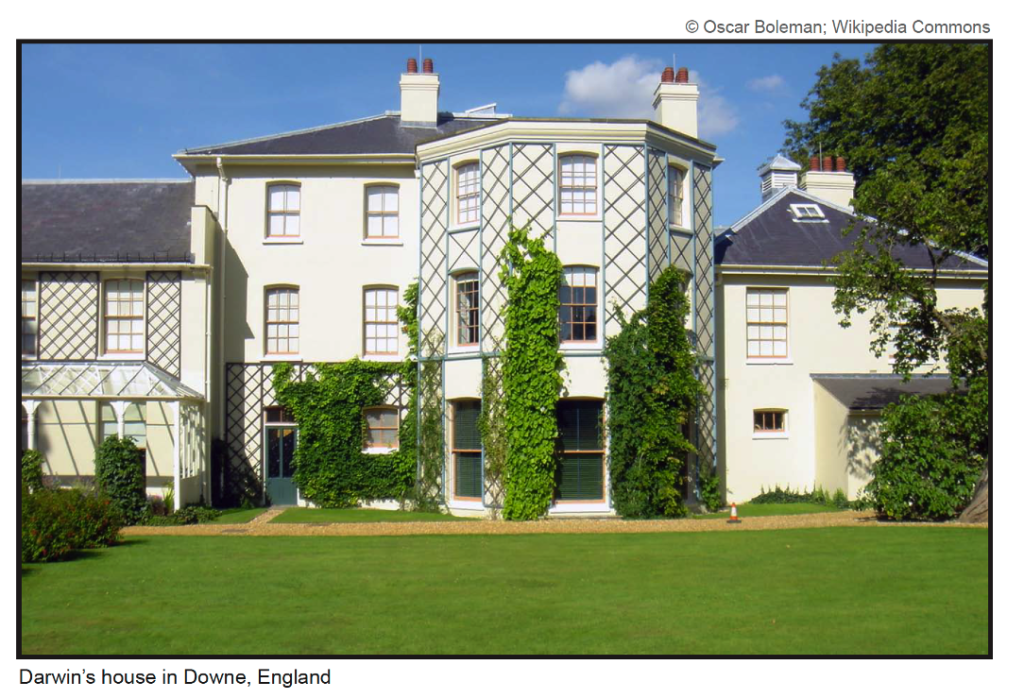
Artificial selection is a process by which humans consciously select for or against particular features in organisms. Long before Darwin and Wallace, farmers and breeders were using the idea of selection to cause major changes in the features of their plants and animals over the course of decades. By allowing only those plants and animals with desirable characteristics to reproduce, humans caused these species to evolve over time. Darwin’s knowledge of artificial selection in domesticated species helped him to deduce the way natural selection acts on populations of wild organisms. Let’s look at some animals that Darwin typically saw around his home in England.
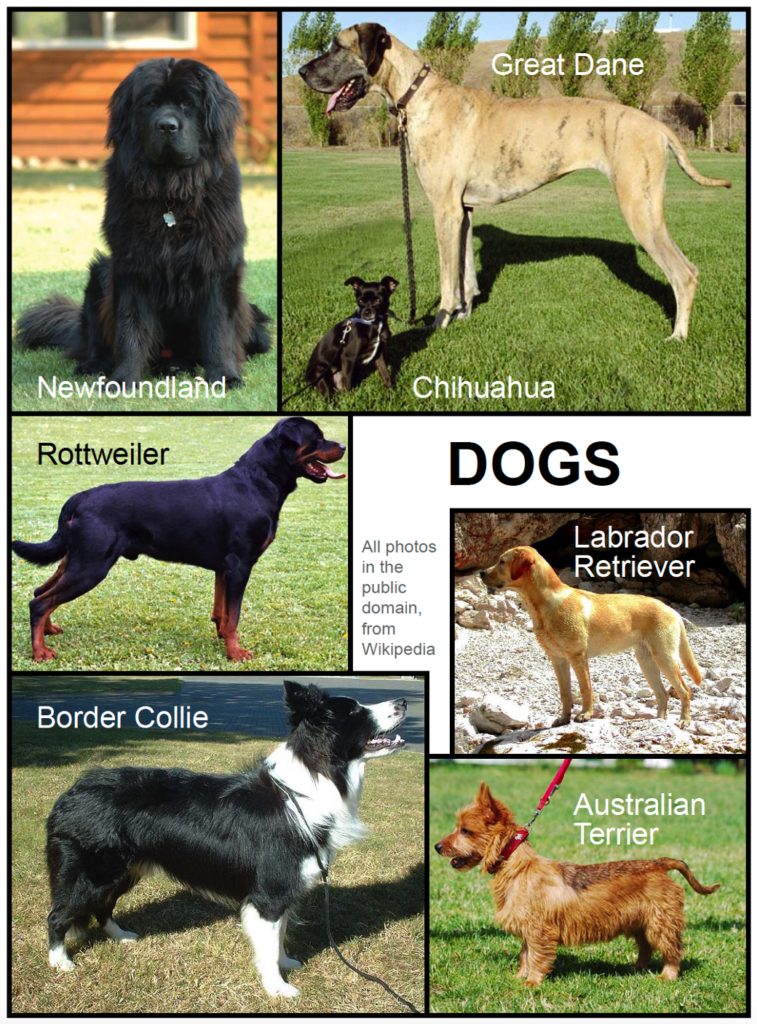
1) List three similarities between all of these dogs:
2) List three differences between the dogs:
3) Why do the dogs look so different from one another?
4) One definition of a species is a “group of organisms that can potentially interbreed to produce viable offspring.” Are all of these dogs the same species? Explain your answer.
5) If I have a male and female of each of the dog breeds pictures, which two should I breed together if I want to produce a dog that is very small and black and has long hair?
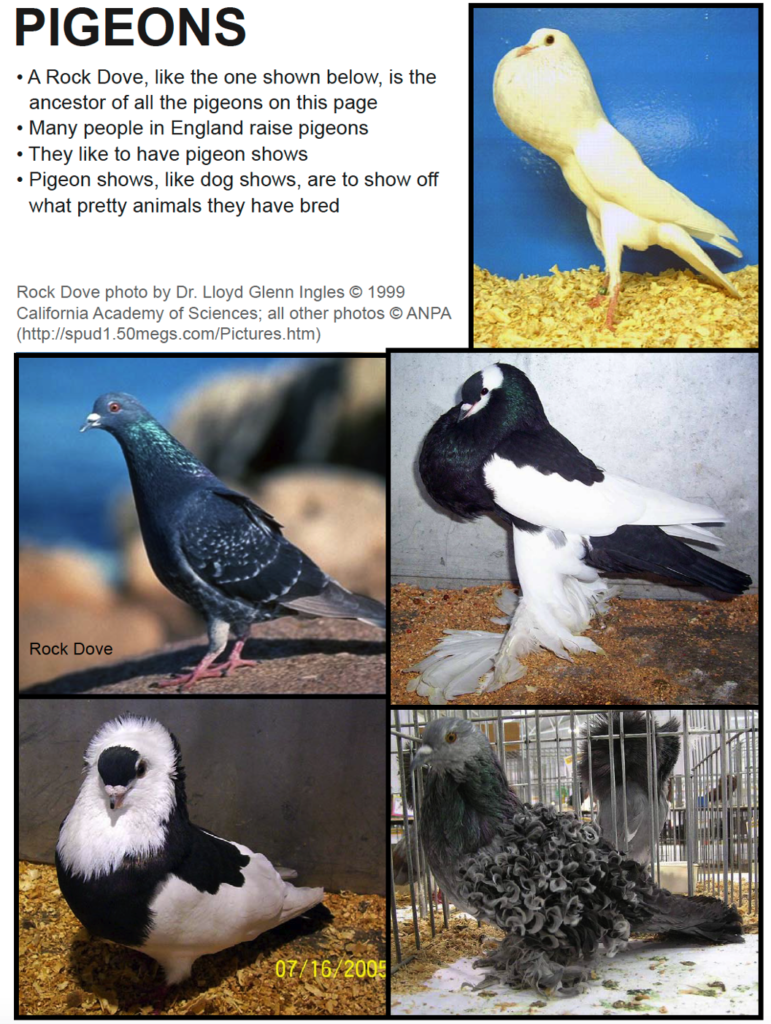
6) Do you think that these pigeons are all the same species? Why or why not?
7) Can you think of any other familiar plants or animals that might be the product of artificial selection by humans? Describe two. (You may do an internet search to look for examples, but remember to write up your findings in your own words).
In 1831, Darwin leaves England on the HMS Beagle, to begin a journey around the world that would take 5 years to complete. Along the way, he made observations of the natural world, about which he took careful notes. He also collected animal specimens to be sent back to England for further study.
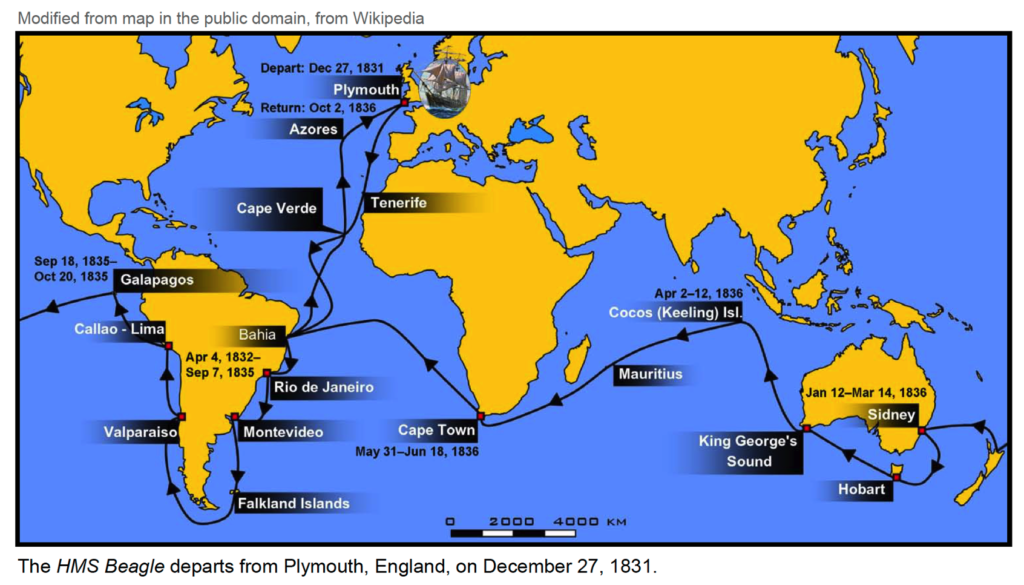
Station 2: South America

Darwin spent more than three years in South America, discovering many fossils there. His examination of these fossils led him to think about the history of life.

1) Looking at the photos below, what seems to be the main difference between the ground sloth and the three-toed sloth?

2) Again, considering the images below, what is the main difference between the ancient capybara (Phoberomys) and the modern capybara?

3) Darwin found the bones of the ground sloth and what he thought was an ancient capybara in South America. He asked around, but nobody in South America had ever seen either of those animals alive. Explain what you think had happened to them.
4) Provide two hypotheses that could explain why ground sloths and ancient capybaras are no longer seen alive.
Station 3: Galapagos Islands

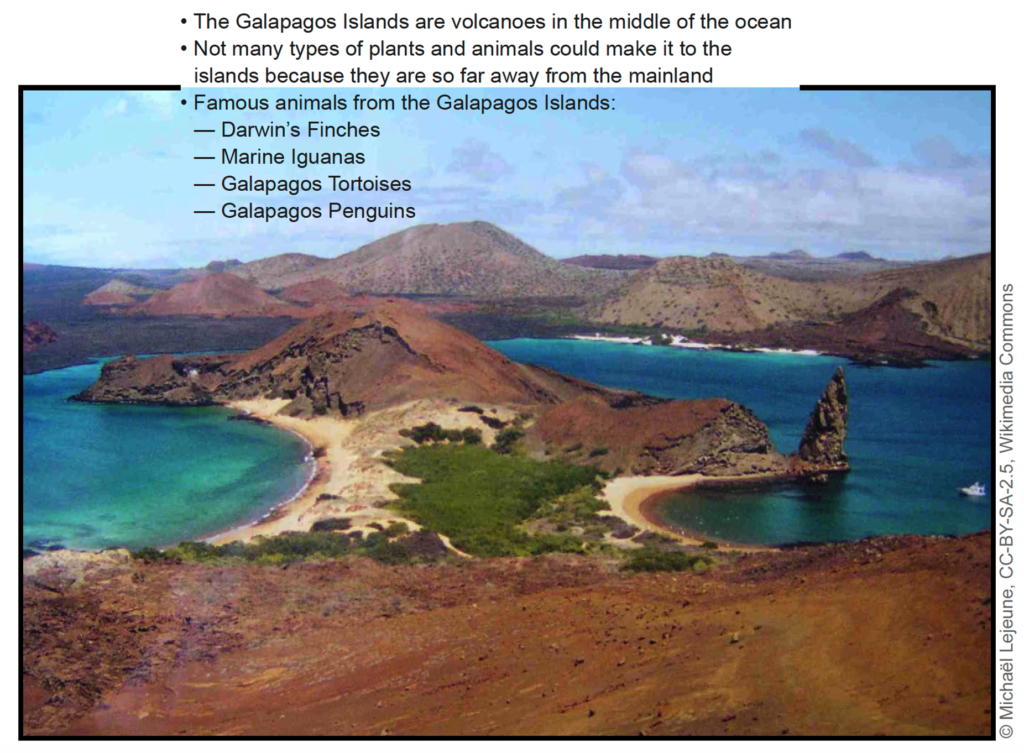
1) When Darwin reached the Galapagos Islands, he saw many of the finches pictured at this station. He noticed that they had different-shaped beaks. Why do the different finches have different beak shapes? Explain this in three to four sentences.
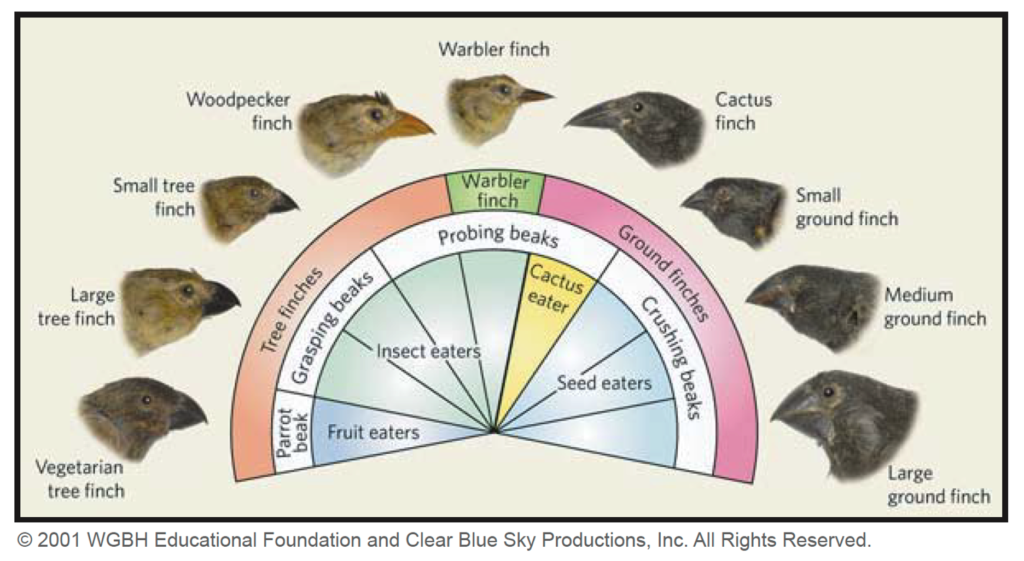
2) According to the diagram above, what does the Warbler finch eat?
3) Consider the finches pictured below. These three finches eat seeds. Try and match up each finch with the seed it likes to eat.

4) We know that all three of the birds from the previous question live on one island. The island becomes warmer and the trees that produce hickory nuts produce fewer nuts. Sunflowers like the heat and more sunflowers grow and produce seeds. What will happen to the population sizes of the each of the species of birds on the island?
- Bird A’s population will increase / decrease / stay the same
- Bird B’s population will increase / decrease / stay the same
- Bird C’s population will increase / decrease / stay the same
Station 4: Australia

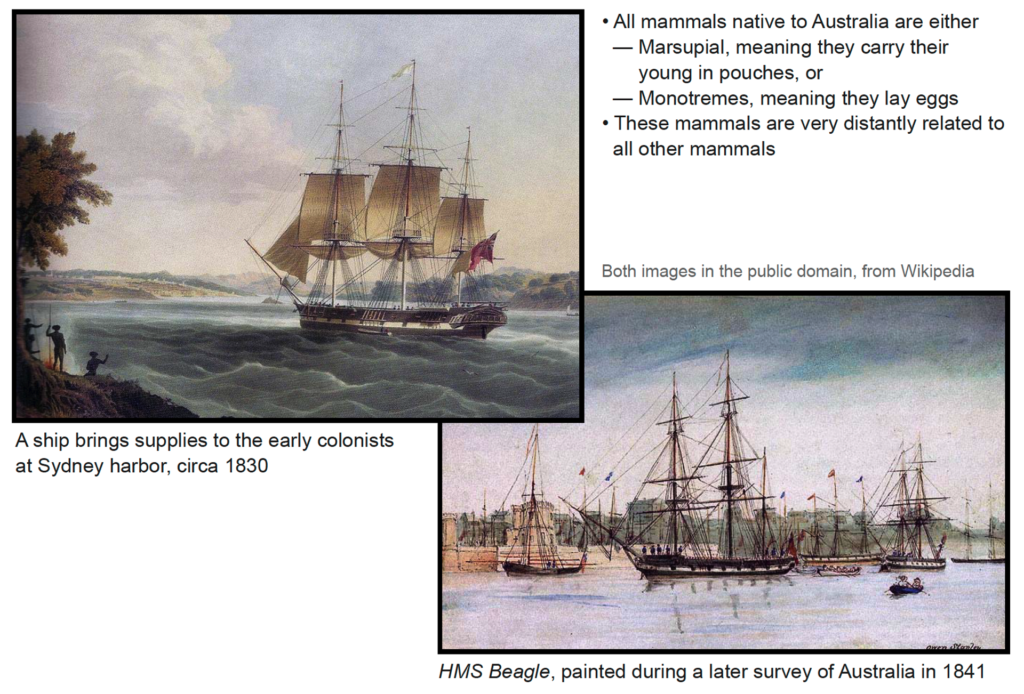
Look at the images of two different skulls photographed from different angles. All those labeled “1” are from one species, and those labeled “2” are from a different species of animal.

1) List three ways that skull #1 is similar to skull #2.
2) Look at the picture labeled “A.” Count the number of teeth on each jaw.
- The jaw of skull #1 has _______ teeth.
- The jaw of skull #2 has _______ teeth.
3) List two more differences between the two animals’ skulls.
4) What do you think these animals eat? Why?
5) Do you think these two animals are closely related to one another? Why or why not?
6) The skull labeled #1 is from an animal called the Thylacine, or marsupial wolf. Skull #2 is from a gray wolf. While both of these animals are mammals, they belong to groups that are very distantly related to one another. Why do you think the skulls look so similar even though the animals are not closely related to each other?

7) Select two of the Marsupial/Placental pairs of animals shown below, and provide a hypothesis about what selective forces might have caused the similarities between the two distantly related animals:
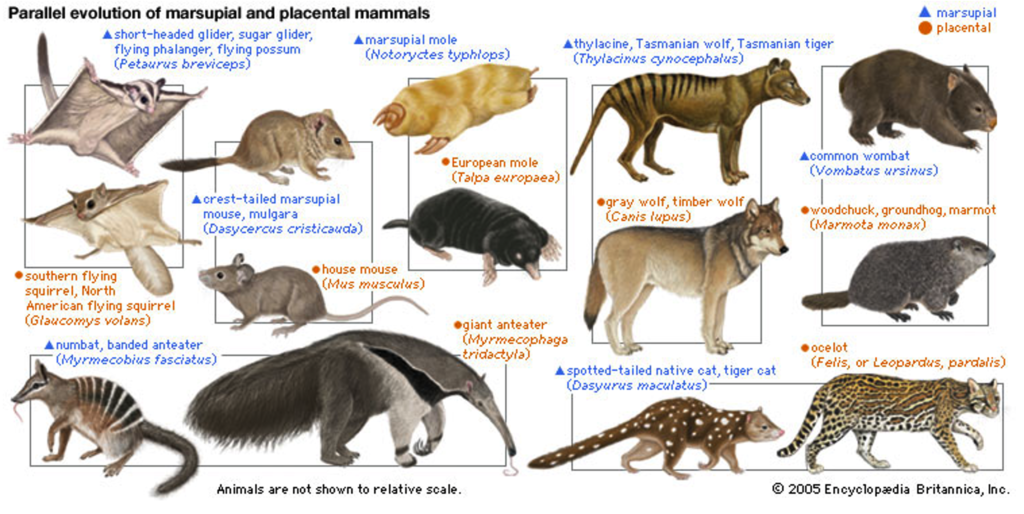
- Pair 1
- Pair 2
Station 5: Homology & Convergence
A homologous structure is an organ or bone that is derived from a common evolutionary ancestor. Below are examples of forelimbs in several species that demonstrate reshaping of the same bones.
Not all structures that function similarly, or even appear nearly identical, are homologous. Bat wings and butterfly wings are both adapted for flight but evolved separately. This makes them analogous if you consider their more recent ancestry (they did not both evolve from the same flighted ancestor), or homologous if you go back far enough to find a very early non-flighted animal that is a common ancestor of both.

1. What do all these limb structures have in common?
2. Consider what you know about the types of organisms pictured. What can account for the differences in structure? List one or two reasons why the limb structures pictured are especially appropriate, based on the type of animal to which they belong.
- Human:
- Dog:
- Horse:
- Bat:
- Bird:
- Seal:
3. What is a homologous structure, and how do these structures help us understand evolutionary relatedness?
Whales and dolphins are mammals – animals that have hair and produce milk for their offspring. Although they don’t have obvious fur, and their bodies are shaped similarly to those of sharks and other fishes, whales and dolphins are not closely related to those organisms. Instead, they’re much more closely related to cats, dogs, and humans.

Consider the information in this table, then compare the hypothetical phylogenies.
| Sharks | Dolphins | Humans |
| Skeleton made of cartilage | Skeleton made of bone | Skeleton made of bone |
| Aquatic lifestyle | Aquatic lifestyle | Terrestrial lifestyle |
| Powerful tail and fins for locomotion | Powerful tail and fins for locomotion | Legs for locomotion |
| Use gills to get oxygen from the water in which they swim | Go to the surface and breathe atmospheric air with lungs | Breathe atmospheric air with lungs |
| Don’t nurse their young | Do nurse their young | Do nurse their young |
| Don’t have hair | Are both with hair around their “noses” | Do have hair |
4. Given the above, which phylogeny do you think makes the most sense, A or B? _______

Now, examine the, “Whale of a Family Portrait” graphic below.

5. In a few sentences, explain how aquatic animals like whales can be more closely related to terrestrial ones (humans) than they are to other aquatic animals (sharks).
The structural similarities between sharks and dolphins are an example of convergent evolution. Another classic example of convergence is the evolution of flight.
Consider the image below. The three organisms pictured are members of diverse groups (L-R a bird; a extinct reptilian vertebrate; a mammal).
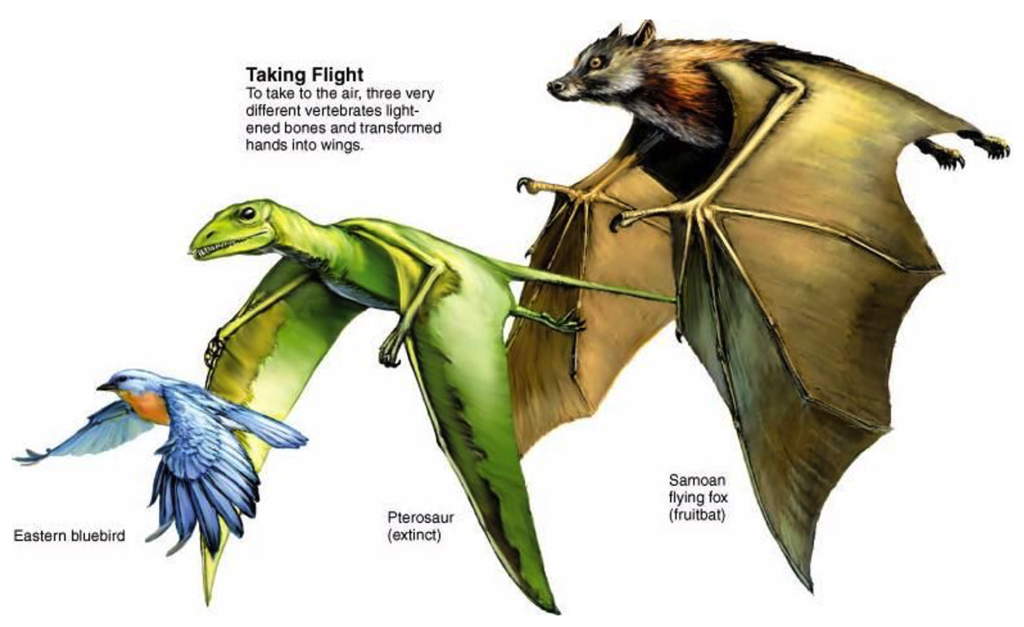
6. Think about other members of the groups mentioned (birds, reptiles, mammals). Are all the members of these animal groups flighted?
7. Given your answer to #6, what is the best explanation for why the three organisms pictured have flight, but other more closely related animals do not?
8. Can you think of another group of animals that has flight? What group is this? Do you think that wings in these organisms are homologous or convergent with the wings of a bird?